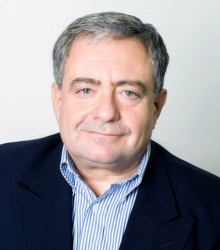Lecture ‘Essentials of Technology Innovation: Insights from Theory, Policy and Practice’ by Prof. Elias G. Carayannis, TheGeorge Washington University
On November 10, 2014 the students and the staff of ISSEK attended an HSE-hosted lecture by the guest speaker Prof. Elias G. Carayannis from the George Washington University (USA, Washington, D.C.).
On November 10, 2014 the students and the staff of ISSEK attended an HSE-hosted lecture by the guest speaker Prof. Elias G. Carayannis from the George Washington University (USA, Washington, D.C.).
Professor Carayannis conducted a lecture on ‘Essentials of Technology Innovation: Insights from Theory, Policy and Practice’, presenting the history and geography aspects of innovation, the technology life cycle through the prism of Kuhnian paradigms, covered the issues of innovation generation and the factors influencing the latter.
According to the speaker sometimes innovations happen in a manner that is repetitive: it is about creating new ways of doing things that are more efficient, productive and effective. But what is exciting about innovations is why they happen, what environments create them and what factors influence. Particularly, the George Washington University professor brought to the attentionof the audience the case of China, referring to the so called ‘the Needham question’ – a study of China’s scientific history conducted by the Cambridge don Joseph Needham.
The Chinese began printing 600 years before Johannes Gutenberg introduced the technique in Germany; they built the first chain drive 700 years before the Europeans; and they made use of a magnetic compass least a century before the first reference to it appeared elsewhere. So,why did in the 15th century China stop innovating? As concluded by Prof. Carayannis innovation is not something given, it is a result of convergence of different circumstances that are conducive and promoting innovation.Hence, according to the foreign expert in terms of critical success and failure factors of innovation, and also entrepreneurship, a proper diagnosis of the conditions, the context within which to establish innovation, should be done, in addition to understanding what the technology underlying innovation is. Cultural and technology issues are interlinked: something that is a great technology for one setting, society, economy, may appear not to be the best fit for other socio-cultural and economic environment.
Why is innovation important, why does it matter? To enrich a few people, entrepreneurs who make an innovation, or to provide benefits to public, society at large? According to the speaker ideally an innovation should serve both public and private interests. In reality, innovation not always has public spillovers, though there is a possibility of transitional transformation from private to public good. For example, patents, giving temporary monopoly rights to the owner, become a public good after the expiration date.
The final part of the lecture was dedicated to the notion of the technology life-cycle S-curve and technology push and market pull forces that shape the latter. In the course of exchange of ideas the question was raised whether S-curve is the best fit for picturing technological development.

Dr. Elias G. Carayannis is a professor of science, technology, innovation and entrepreneurship, the co-founder and co-director of the Global and Entrepreneurial Finance Research Institute (GEFRI), as well as the Director of Research on Science, Technology, Innovation and Entrepreneurship of the European Union Research Center (EURC) at the GW School of Business. His teaching and research activities cover the issues of strategic government-university-industry R&D partnerships, technology road-mapping, technology transfer and commercialization, international science and technology policy, technological entrepreneurship and regional economic development.
Author: Asmik Airapetyan

